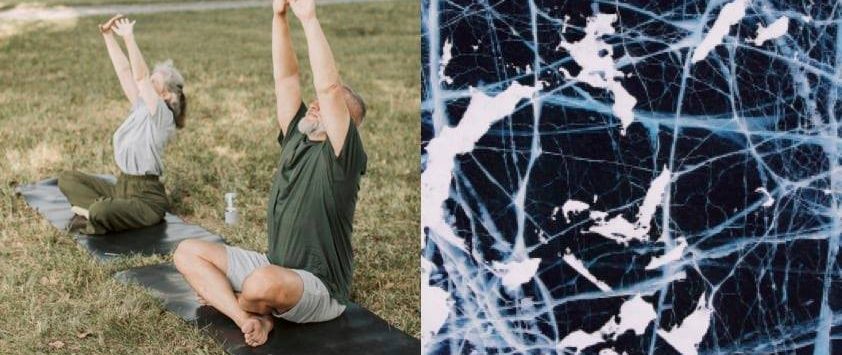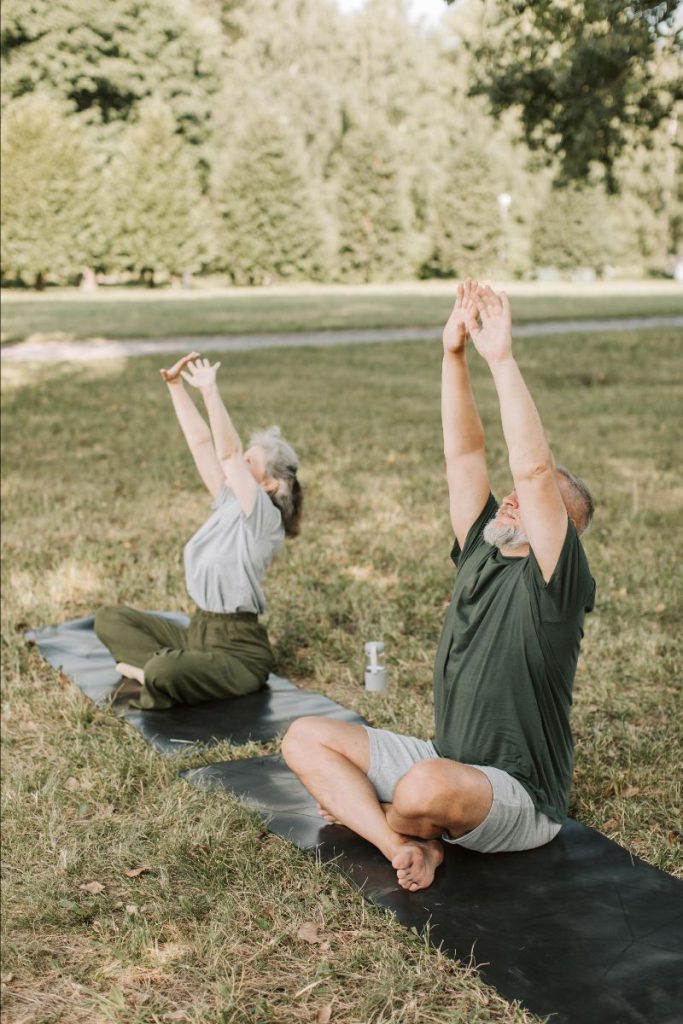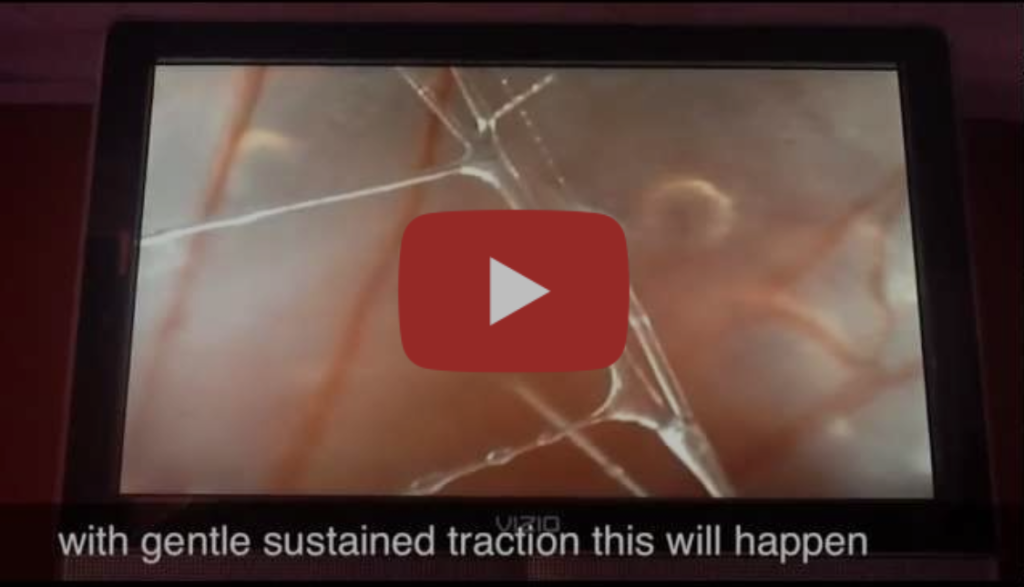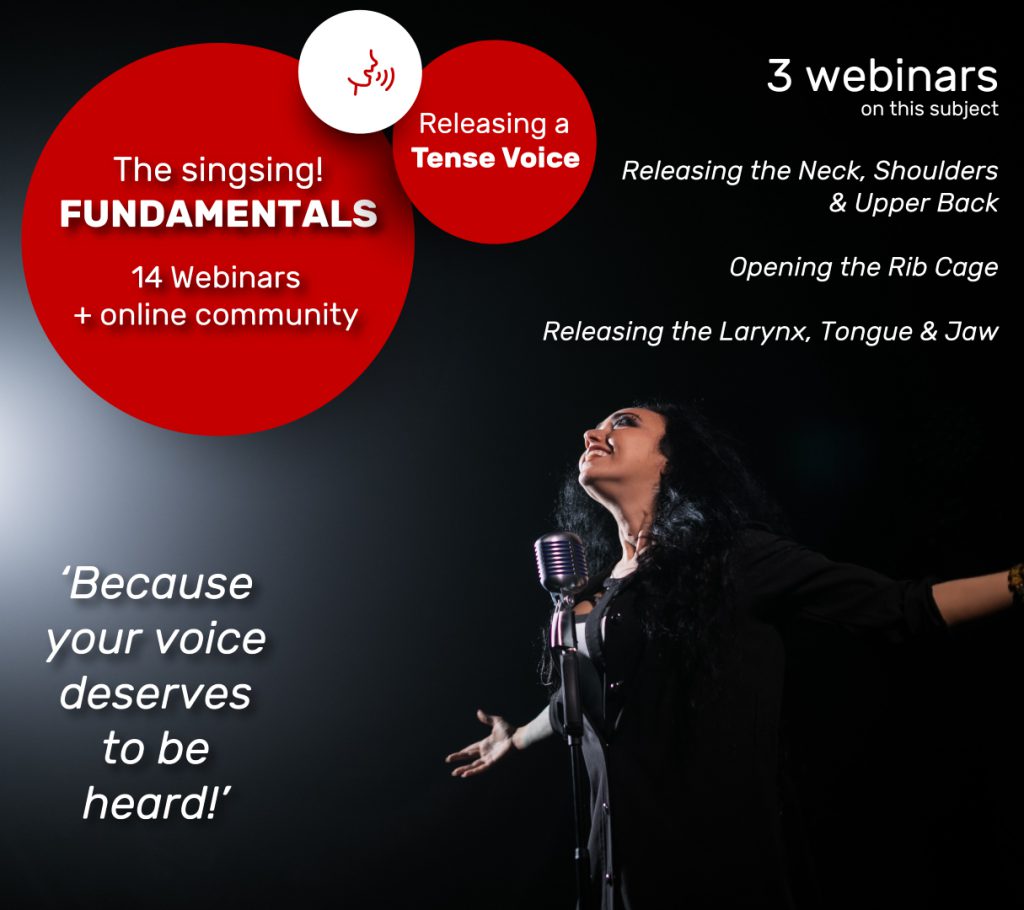
Use gentle vocal sounds to release muscular tensions
11/10/2021
It’s likely that you already experienced yourself that mindful bodywork can be very powerful in order to solve vocal issues. Yin yoga, stretching, alexander technique,… But did you know that it also works the other way around?
Gentle vocal sounds can accelerate the process of releasing muscular – and other – tensions.
How? It’s all in the magic of fascia.
Fascia is the very flexible – you might say liquid – tissue that surrounds and connects your muscles, organs and so much more all over your body. That’s why it’s also called connective tissue.
Many among us have fascia that has become too stiff.
Imagine that. The stuff that surrounds, suspends and supports everything in your body is in a state of freeze.
I use the word “freeze”, because I want to illustrate the connection that fascia has with the emotional and physical freeze reaction you can have in stressful situations, next to the fight or flight-reaction.
That state of freeze can be a result of a very recent happening, but it can also be the result of something that has happened many years ago. Working with fascia can be a very effective way to get rid of tensions that have built up, without necessarily having to understand where they came from. Even though it can also trigger an emotional release, it is not psychotherapy. However, it can be a very supportive element in the process of it.

So how do you get rid of that state of freeze?
Your most important goal is to make it flexible – you might say liquidify it. Imagine your muscles and organs suddenly being surrounded, suspended and connected by a tissue that’s much more supple. Doesn’t that sound good?
There are many ways of working with fascia: Yoga, alexander technique, other somatic bodywork,… Now, the cool thing is that if you add gentle vocalisations, the release happens much faster and deeper.
So now I’m challenging you!
Next time you perform a stretch exercise, whether it be yin yoga or a simple stretch after working out, make a long, gentle Vvvvvvvv on a comfortable pitch, every time you exhale.
You can choose between nasal / oral inhalation, whatever feels most comfortable to you, but whatever you do, make sure that you keep your teeth separate all through the exercise.
And if all this is a piece of cake for you, I challenge you to add a resisted inhalation to it.
That means that you inhale on a long, reversed Fffffff, and then exhale on a long, gentle Vvvvvvv.
What happens? Do you feel a difference, compared to the same exercise without vocalisation? If so, can you describe it in your own words?
I wish you a lot of fun, making your fascia more fluid, and freeing your voice 🎶

Mindful bodywork like the exercise above is essential to support your singing. Do you want to dig deeper?
Subscribe to The singsing! Sofa Library, watch the three webinars on Releasing a Tense Voice, and learn to deal with a tense voice, related to physical or mental stress.

Debbie Walton - Singer & Conductor of the Surrey Hills choirs
Debbie Walton - Singer & Conductor of the Surrey Hills choirs


Maud - Speech Therapist
Maud - Speech Therapist


Kaidyn Hinds - Singer
Kaidyn Hinds - Singer


I will use the "hands to heal" exercise to activate my body more.
Jean Andersen - Singer
Jean Andersen - Singer


Hanne Rossey - Yoga Teacher
Hanne Rossey - Yoga Teacher


Julie Lowe - Singer
Julie Lowe - Singer


Madeleine Gruppetta - Singer
Madeleine Gruppetta - Singer


Dr. Tracy Smith Bessette - Singer, Voice Instructor, Early Music Coach & Course Lecturer
Dr. Tracy Smith Bessette - Singer, Voice Instructor, Early Music Coach & Course Lecturer


Kaidyn Hinds - Singer
Kaidyn Hinds - Singer


Bastiaan Maertens - Singer & Actor
Bastiaan Maertens - Singer & Actor


Sara Jäggi - Singer & Vocal coach
Sara Jäggi - Singer & Vocal coach

As always, feel free to send me your thoughts, questions, and feedback in the comments below this blog, via the contact form or in the singsing! online community
Cordially,
Sarah



